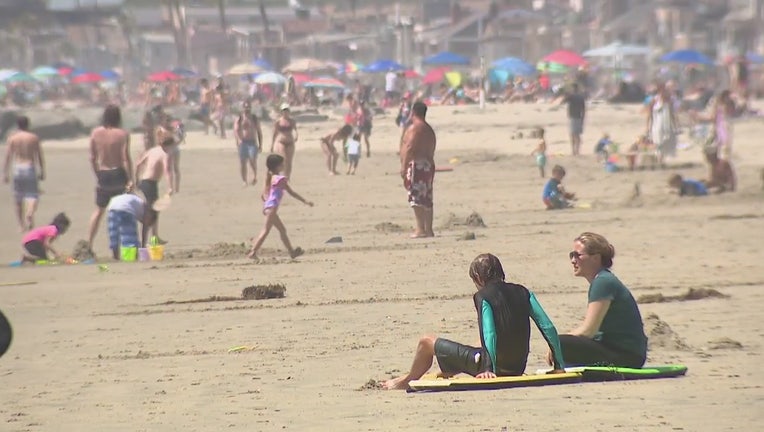Proposed bill in California would rank heat waves like hurricanes

SACRAMENTO, Calif. - California could be implementing a new heat wave ranking system, similar to that used to categorize hurricanes.
State lawmakers have proposed a new bill designed to better inform and warn residents about extreme heat events, which have become more intense and more dangerous, according to climate experts.
"Extreme heat is a serious and growing threat to the public health and economy of California," said the authors of Assembly Bill 2238. Lawmakers also said data suggested such weather events could become up to ten times more frequent and deaths could increase by two to three-fold by 2050, compared with historical levels.
SEE ALSO: Heat records set in Bay Area winter; more warm weather ahead
Under AB 2238, the California Environmental Protection Agency would be required to work with the state’s Integrated Climate Adaptation and Resiliency Program (ICARP) to create a statewide system that would rank extreme heat events. Introduced by Southern California Assemblymembers Luz Rivas (D-San Fernando Valley) and Eduardo Garcia (D-Coachella), the bill would also create a public communication plan for the heat ranking system, as well as direct the Department of Insurance to conduct a study of costs related to past extreme heat events.
Rivas's office pointed to data from recent years, including in 2020 when Los Angeles County reached a temperature of 121 degrees, the highest ever recorded in that area, leading to a spike in emergency room visits during that event. And last year, the Coachella Valley recorded its hottest year ever with temperatures hitting 123 degrees.
The legislation pointed to the fact that there were already existing warning systems in place to alert residents of other environmental events that pose dangers. Such examples include California’s Red Flag warnings for extreme wildfire conditions. There was also the Saffir-Simpson Hurricane Wind Scale used to name and rank the strength of tropical storms and hurricanes.
AB 2238 would offer a similar model categorizing the danger level of a heat wave.
"Categories let authorities scale and target their messaging and recommendations to the public and to responding agencies," explained the director of Extreme Heat Initiatives at the Adrienne Arsht-Rockefeller Foundation Resilience Center, Kurt Shickman, who’s helping to push for the legislative action.
"For example, people and authorities prepare and take action very differently when facing an imminent Category 1 versus a Category 5 hurricane," Shickman said. "This bill would give us the same capacity to encourage safer citizens in a similar way when facing heat."
Some weather experts said that while heat waves may not have necessarily become more frequent, the episodes have been more intense and have been lasting longer, putting an enormous amount of strain on people’s health and on the state’s infrastructure.
"A day or two of the heat, once a year, we can handle that. But when we’re seeing instead, five to seven days, it becomes incredibly impactful both on the human population, as well as our livestock population, as well as our power grid," explained Brian Garcia, Warning Coordination Meteorologist with the National Weather Service’s (NWS) Bay Area Monterey region.
The NWS has not been involved in the development of the bill and does not comment on proposed legislation, but the agency said there’s ongoing need to highlight the dangers and impacts of such events, particularly when they occur early in the season when the body has not acclimated to extreme temperature swings.
The impacts can be most notable among vulnerable populations, Garcia said. "Our unsheltered and minimally sheltered populations… are extremely susceptible to extreme temperatures whether it be heat or cold," he said.
The bill sought to address that point, calling for a focus on strategies to optimize communication efforts to those most at-risk.
"Heat waves cause more deaths than all other extreme weather events and adversely impact communities of color, persons with disabilities, seniors, and low-income communities," the bill’s authors said, adding, "therefore, extreme heat risk awareness has become more urgent as climate change increases the severity and duration of heat waves."
Advocates of the bill also said the legislation was a needed tool in closing what has long been an "awareness gap" when it comes to heat waves.
"People simply don’t think of themselves as vulnerable," Schickman said. "On one hand, there is still a low level of awareness of the risks of heat illness and death. And on the other hand, heat kills about half a million people per year globally – making it the deadliest natural disaster we face."
AB 2238 has recently been introduced to the state legislature and in the process of being referred to a committee.

